Palmerston North librarian Alan Dingley and his two daughters review five of the freshest New Zealand-published non-fiction titles around, covering everything from food for sailing Englishmen, to some of the biggest questions of the natural world.
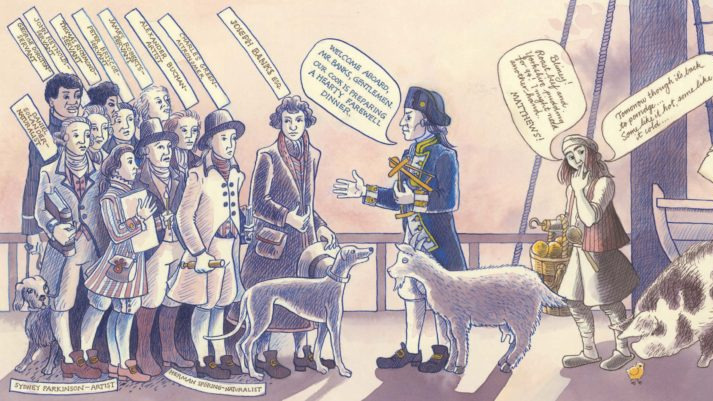
Food Atlas, by Giulia Malerba, illustrated by Febe Sillani (Oratia Media)
I love when I open a book and the endpapers are awash with illustrations and colour, and this book is one of that special breed. You could spend a chunk of time quizzing yourself and others on what is in each little picture here, and you haven’t even reached the ‘actual’ book yet!
Food Atlas is large, colourful, translated title from Italian author Giulia Malerba and illustrator Febe Sillani. It is a smorgasbord of geographical food offerings, presented in large maps of cute pictures of everything from a buck-toothed Grey Wolf, to a Māori warrior tending to his hangi!
It is a smorgasbord of geographical food offerings, presented in large, colourful maps …
The book switches from landscape to portrait and back again, which cunningly makes the trip across the world more of an adventure as, due to the size of the book, the kids were scrambling around in their seat making the book fit so they could devour the information and pictures on this well-crafted menu.
I was almost ready to rebel when I saw Pavlova featuring on the ‘AUSTRALIA’ pages, but calmed down as read that ‘Australia and New Zealand both claim to have invented it’. New Zealand’s contributions to world cuisine range from Bluff oysters to sweet potatoes, and there is mention of our attempt to hunt the takahē to extinction for food. Many of the pages touch on this theme, which I like as it inspired a conversation with my girls about where our food comes from and how are we looking after it.
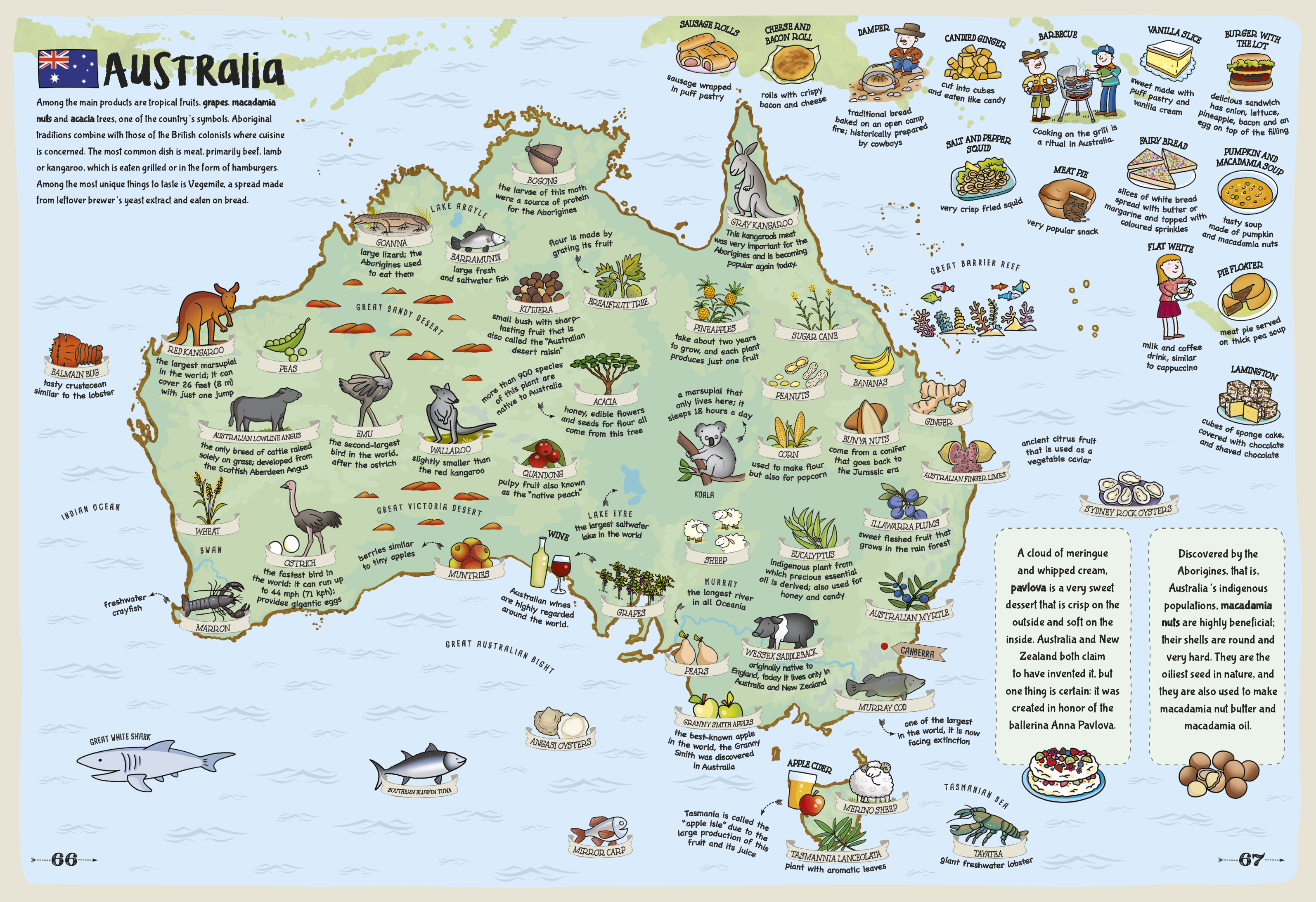
Miss 8 almost instantly asked ‘What foods have you tried in here, Dad?’ So began the great game of hunting for foods that have passed my lips, and me creating stories about why I hadn’t tried ‘chapulines’ (look it up!). She picked her favourite pictures, then asked whether New Zealand had this food or that animal, and could we find recipes or ingredients to cook many of her choices? The book sparked conversations ranging from geography and history, to where we’d travel if we could leap into the book at any page. Miss 6 spent the longest time perched on her chair just lovingly examining each page for pictures that took her fancy, an hour well-spent, I say.
I would have loved recipes to match each country or page, so the possibility for a companion cookbook is ripe for the picking! The vastness of the information on show could be daunting, but there is literally something for everyone in here. From the simple, colourful illustrations, to the short but succinct descriptions, all the way up to the ‘Did you know?’ on many pages, this book is a dream for any young student challenged to a school assignment about ‘foods of the world’.
This is a vibrant, detailed feast of a book that will fill the eyes and minds, and get the mouths of all readers young and old watering.
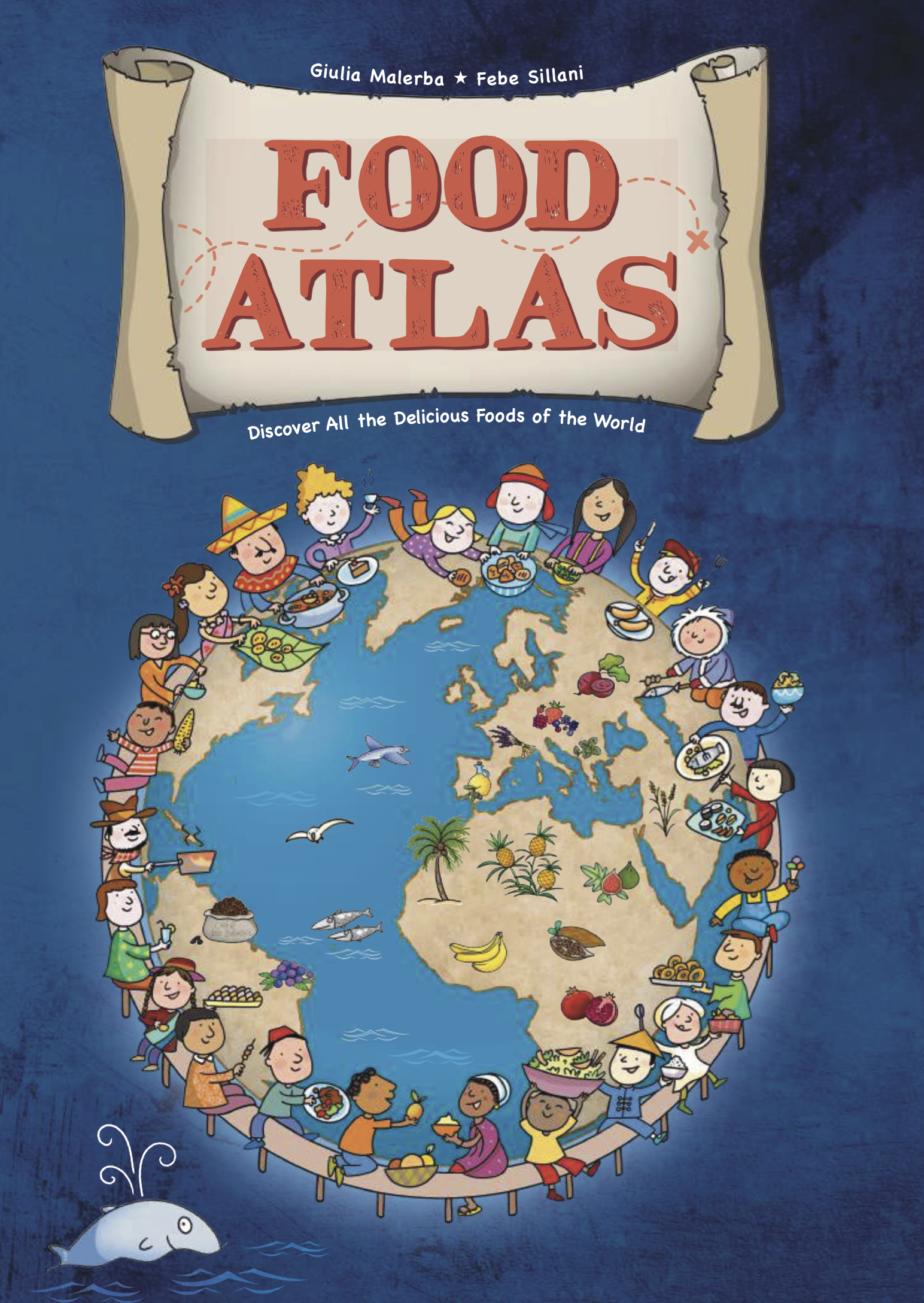
FOOD ATLAS
By Giulia Malerba
Illustrated by Febe Sillani
Published by Oratia MediaRRP: $39.99
Why is That Lake So Blue? by Simon Pollard
For educators and teachers, this book ticks all the boxes: beautiful photos that will start and encourage enquiry; simple, quick-fire factoids to tease the middle learners; and plenty of scientific information to stoke the fires of budding New Zealand naturalists.
Simon Pollard is an award-winning science writer and SPIDER BIOLOGIST (I know!), and has even worked on the incredible BBC series, Planet Earth. He has obviously invested time, passion, and care into the creation of Why is That Lake So Blue?, because it is the complete package. He wants the reader to invest along with him and that is evident from the very first chapter, ‘Why is our place magic?’. He wants others to see, as he does, the beauty, wonder and diversity that New Zealand contains.
He wants others to see, as he does, the beauty, wonder and diversity that New Zealand contains.
That is the very opportunity this book presents. Readers can fill their scientific urges with the study of how Gondwana split into the Pacific we now know, or marvel at the Haast eagle that was large enough to hunt moa … yikes!
The eight chapters all begin with a simple question, then present information in different ways to ensure anyone can find something to capture their interest. Chapters like ‘What used to live here?’ or ‘What happens after dark?’ are more than enough to whet the appetite of the naturalist data-miners that New Zealand needs to keep our unique land what it is.
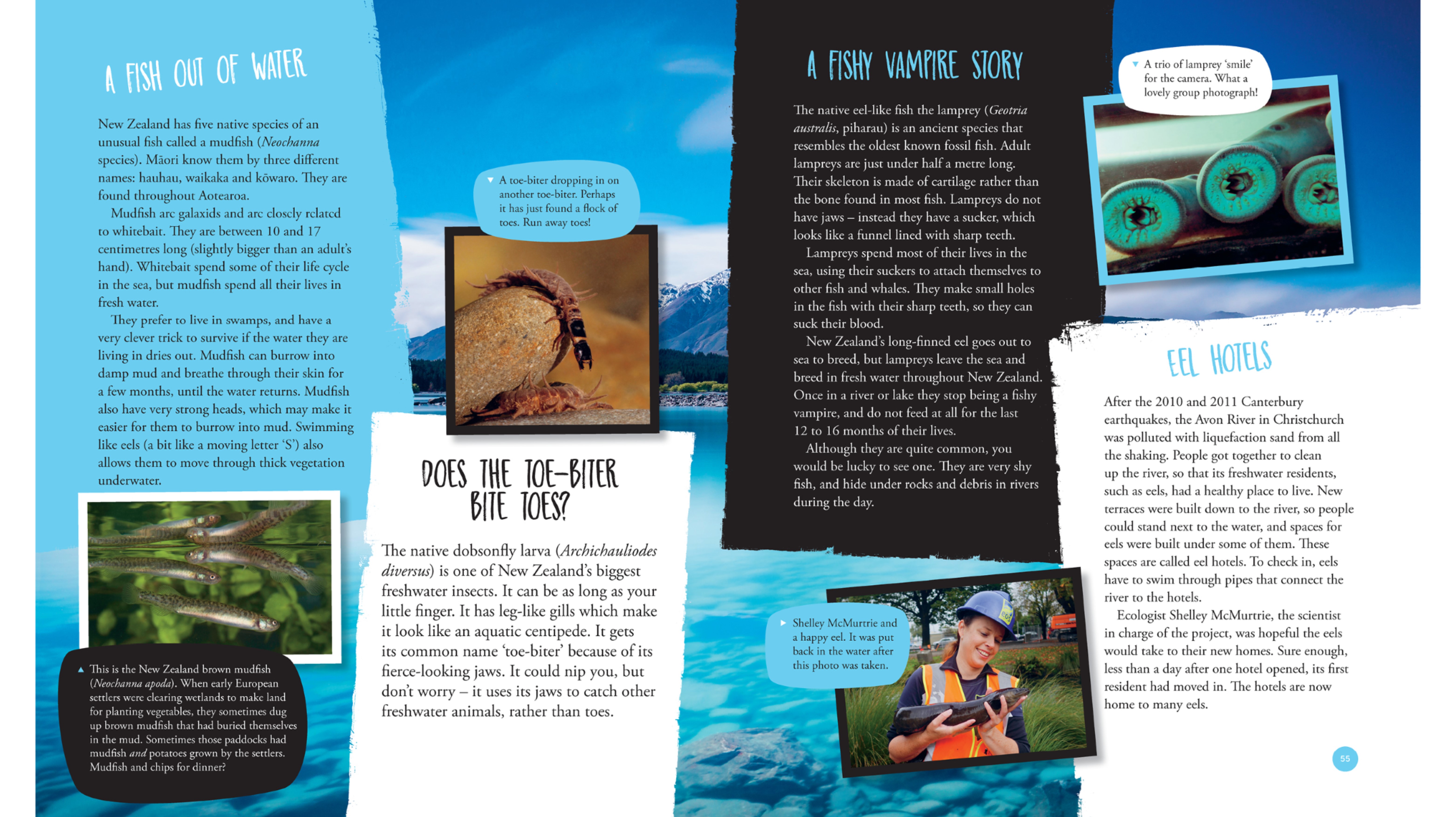
I was keep wide-eyed by answers to questions I never knew I wanted to know the answers to, such as ‘Does the toe-biter have toes?’ kept me wide-eyed and hungry for more information, while Miss 6 + Miss 8 tried to ‘one-up’ each other with the gorgeous photos on display. We spent a long time just picking a page at random and asking questions about photos we saw. This was great fun and we certainly learned a thing or five. Did you know that the hagfish has another common name? The ‘snot eel’. Did we need to know that? Yes, yes, we did! They defend themselves by making slime from pores along their bodies and when attacked they get a mouthful of disgusting ‘slime’. Awesome!
We spent a long time just picking a page at random and asking questions about photos we saw.
The last section of the book asks even more important questions, like ‘What can you do to keep Aotearoa New Zealand magic?’. It is a simple plea for everyone to be active in keeping our environment flourishing and encourages checking out the awesome Kiwi Conservation Club Hakuturi Toa.
Although it is accessible to most age groups, I believe an Intermediate classroom would benefit hugely from this book. This book would be an excellent addition to any classroom, library, or home bookshelf. Simon Pollard knows his stuff, but he has crafted the book so well that the information is never onerous, and anyone of any level can take something from it. Whether it’s the Haast Eagle, or the Snot Eel is up to you.
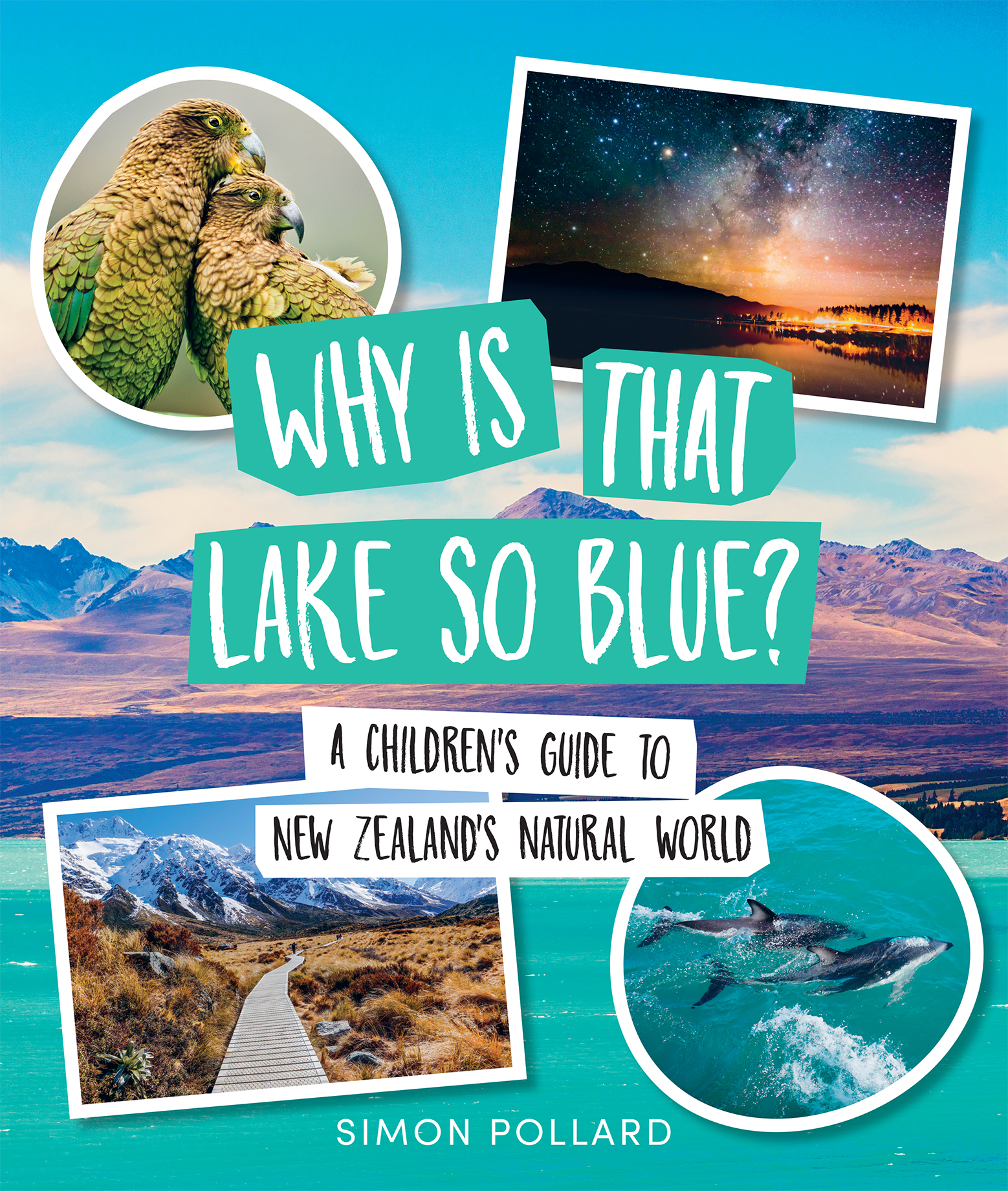
Fanene Peter Maivia ‘Son of Samoa’, written by David Riley, illustrated by Michel Mulipola
As a younger man I loved the WWF (as it was back then) and would watch Hulk Hogan, Brutus the Barber Beefcake, and the Ultimate Warrior strut and pose their way around the ring before engaging in some choreographed brutal ballet. Like all young people, I didn’t realise these performers were part of a legacy stretching back decades, including our own little patch of the Pacific in the form of Peter Maivia, better known as ‘Prince Maivia’.
Maivia was born in Samoa, moving to New Zealand at a young age with his grandmother. In New Zealand he worked in a gym and, due to his impressive physique, was approached and asked if he was willing to give wrestling a go. At the time wrestling wasn’t the polished product you see today; the pay was small and opportunities were rare. He would spend winters in England chasing bouts, not really finding a ‘character’ to portray in the ring. Then, in January 1962, Samoa became an independent nation and he called himself ‘Prince Maivia’. He wore traditional costumes, and even performed a siva Samoa after his victories. Proudly sticking to his cultural identity couldn’t have been easy in some of the countries he visited, due to many prejudices at that time.
Proudly sticking to his cultural identity couldn’t have been easy in some of the countries he visited, due to many prejudicesat that time.
Family was just as important as culture to Peter, and this was reflected when he was joined by his daughter as his ‘ringside second’. She became ‘Miss Hawaii’, even climbing into the ring to hit an opponent with her sandals! Peter wrestled all over the world. Once he wrestled on a riverboat during a summer festival, was thrown overboard mid-bout, then swam back to the boat to finish the match!
At one point of his fame he was given the chance to play a James Bond villain, enjoying the role so much that he couldn’t stop grinning as he strangled James Bond.
The crowning achievement for Peter was wrestling for the World Heavyweight Championship in Samoa in 1979. The match ended with a ‘disqualification’ to his opponent but Peter claimed his Polynesian system of honour wouldn’t allow him to accept victory in this method so a re-match was scheduled later that year which Peter lost in an epic battle.
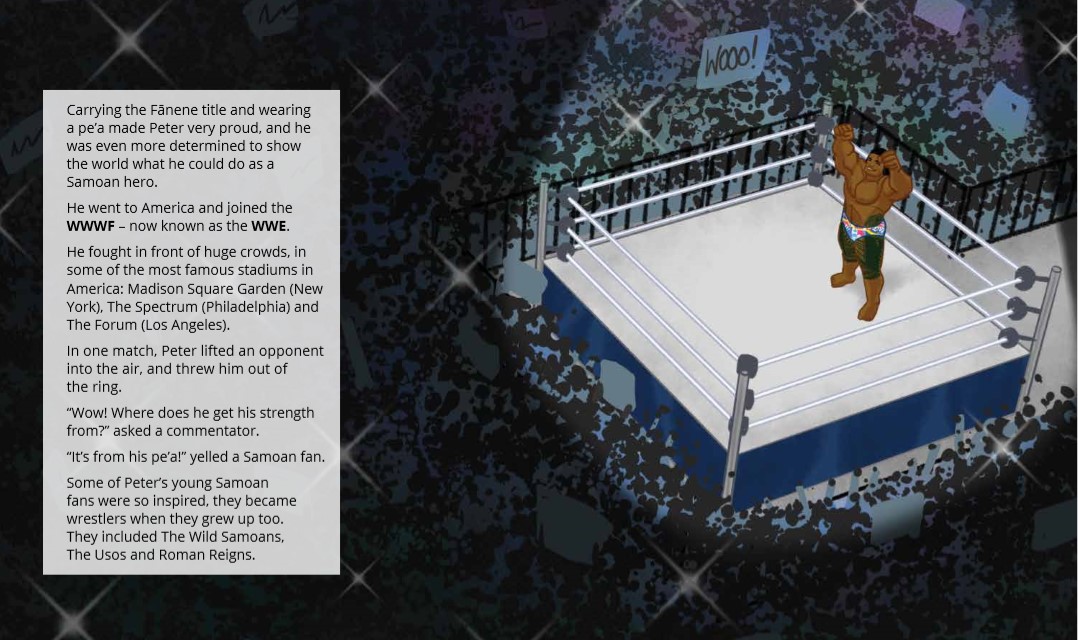
This book is jammed full of Michel Mulipola’s great illustrations, which bring the strength of Peter out of the page, as well as telling a simple story with colourful fun. Wrestling terminology is found peppered throughout the book, flying elbow drops, back loop slam, Boston crab and Indian deathlock to name but a few!
This is a book about a Polynesian role-model, a man who made his way in a tough, sometimes fake business, but retained his sense of cultural identity, using it to his advantage to promote himself and his culture along with it. His legacy was continued by his grandson, the one and only Dwayne ‘The Rock’ Johnson! The back pages show the current Pasifika wrestlers in the Raw/Smackdown universe, all there due to the legacy of a small boy from Samoa.
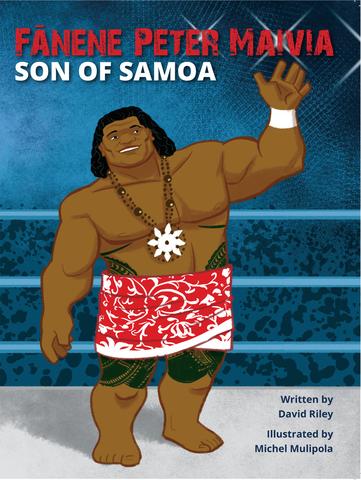
fanene peter maivia ‘son of samoa’
Also available in Samoan as Fanene Peter Maivia – O le Atalii o Samoa
Written by David Riley
Illustrated by Michel Mulipola
Published by Reading Warrior
RRP $25.00
Cook’s Cook ‘The Cook who cooked for Captain Cook’, by Gavin Bishop (Gecko Press)
I am an unabashed fan of Gavin Bishop’s work. His distinctive illustrations and always accessible prose make for books that are equally informative and delightful. This book has both of these traits.
John Thompson is a one-armed cook on board the HMS Endeavour (368 tons/105 feet) as her Captain, James Cook, sets off to search the South Seas for the elusive Terra Australis Incognita (The Great Southern Continent). This was Captain Cook’s first Pacific voyage.
‘Pease porridge hot, pease porridge cold.Pease porridge in the pot, nine days old.Some like it hot, some like it cold,Some like it in the pot nine days old.’
Singing this rhyme as a child I had no idea as to its meaning, relevance, or history. Gavin Bishop’s take on life aboard the Endeavour through the eyes of its practical, hard-working, amiable cook as he battles supplies, weather, rats and more, is a splendid balance of illustration and information.
Gavin Bishop’s take on life aboard the Endeavour through the eyes of its practical, hard-working, amiable cook … is a splendid balance of illustration and information.
The recipes served to maximise supplies and minimise things like scurvy, illness and mutiny – they are engagingly written, and while some sounded tasty, others were stomach-churning! Poor Knights Pudding (French toast), Goose (Gannet) Pie, and Dog and Breadfruit Stew all make an appearance as John battles his one arm, lack of supplies, and conditions aboard a crammed vessel.
As a history-lover, I was delighted by the beautifully presented tidbits of information that gathered on each page, painting the life of not only the hard-working cook, but the experiences of famed botanist Joseph Banks, and of course Cook and his crew. Stopovers in Madeira, Rio de Janeiro, Patagonia, and the myriad of Pacific islands document the scale of the journey and all of the perils and pearls they encountered.
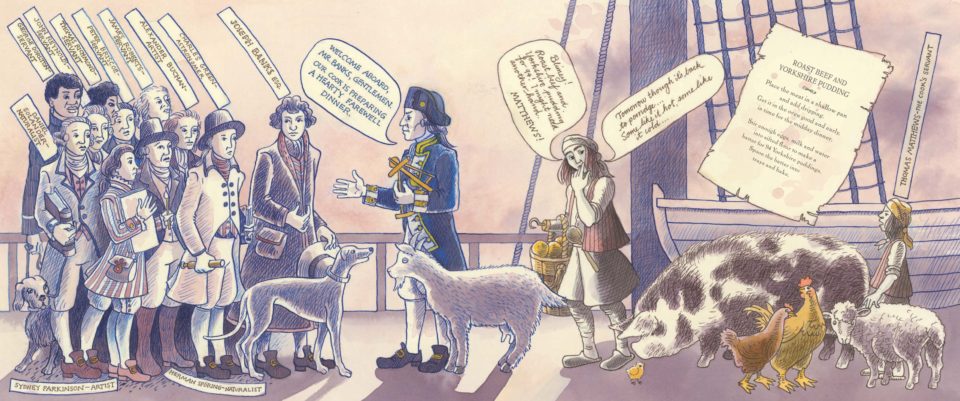
Miss 6 was morbidly fascinated when we reached the part where dogs made their appearance on the menu. It was a pretty tough conversation to have but that small stomach-churn didn’t put our family off from devouring the rest of the book.
One thing that struck me after repeated readings was the lack of ‘vibrant’ colour used by Bishop. Most of the book is in muted greens, blues and reds, which meant that colour was only immediately noticeable when Cook laid foot on the Pacific islands. This is a masterstroke, as the simple bright flowers and fish reflect what beautiful, vibrant place Tahiti is.
This book is historically informative, artistically pleasing, culinarily diverse and, frankly, a pleasure to explore. Any teacher from Year 3 upwards will find more than enough teaching points to keep their students, and themselves happy, as this one-armed cook cooks for Cook!
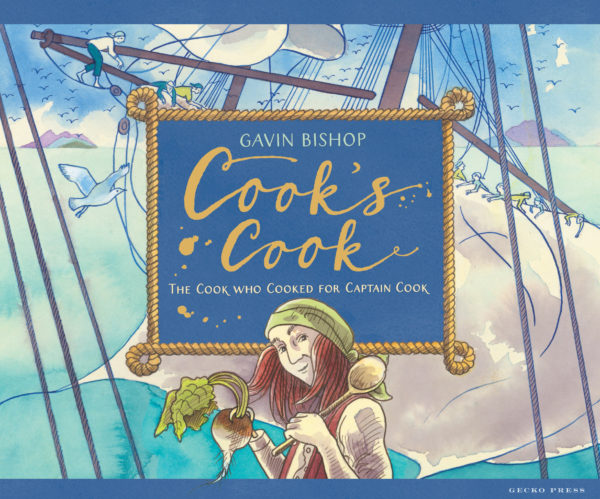
Oh Boy, by Stuart Lipshaw (Penguin NZ)
Do not skip over the Preface at the start of this book. It is the best part. Author Stuart Lipshaw explains that he isn’t trying to write an instruction manual on how to be a hero, only to show that is possible to achieve anything.
Lipshaw writes, ‘The people in this book didn’t ask to be included. They are there because their stories inspired us. They overcame obstacles. They had doubts, like we all do. They never gave up. And they changed the world, each in their own special way.’
These inspiring people include AJ Hackett and his leap of faith that became a worldwide adrenaline empire, to Taika Waititi the NZ director who bought us the New Zealand classic film Boy, and is now taking the helm of the world’s blockbuster movies.
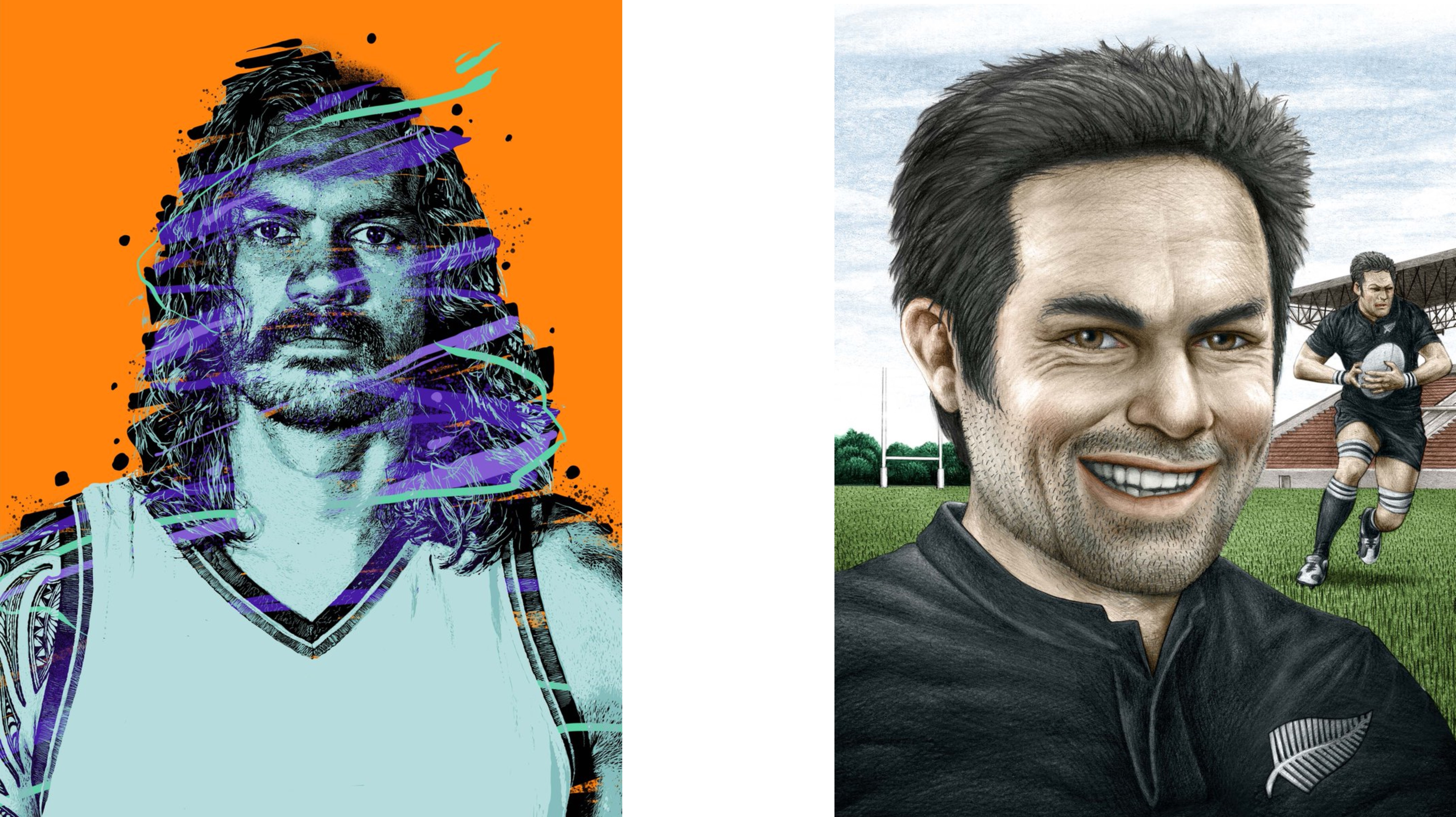
Each entry gets two pages for their story, accompanied by some gorgeous illustrations from New Zealand’s finest illustrators and artists. This, for me, is where the book comes alive. The pictures alone tell a story. Pacifist Archibald Baxter is depicted with simple white flowers, with him in the rain tied to a pole on the battlefield for his refusal to carry a weapon. Neil Finn has a beautifully life-like portrait, as does Steven Adams.
Each entry gets two simple pages for their story, accompanied by some gorgeous illustrations from NZ’s finest illustrators and artists. This, for me, is where the book comes alive.
The text Lipshaw provides is simple and direct. The information is personal, and describes the choices the men made that set them on the road to success. Lipshaw provides a small window into these men, leaving you wanting more, and as is mentioned at the back of the book, ask your local librarian or check out Te Ara if you want to know more. This book feels like an introduction, an entrée to what you could find out if anything in the book whets your appetite.
The book is obviously aimed a particular age group, and perhaps that is why room has not been made for LGBQTI+ advocates, or Māori leaders aside from Apirana Ngata, who gets a very sanitised entry. New Zealand’s history of world-changing activism has also been overlooked. It is important, and would have been encouraging, to see the work of well-known members of the gay community such as Richard O’Brien and Kevin Hague profiled.
I am glad this book has come out now. As a Youth Librarian, I have been joyful to see a rise in the number of ‘girl power’ non-fiction, positive role-modelling of girls and women who have changed the world. Aside from the lack a LGBTI+ profile, Oh Boy is a lovely counter-weight. I can joyfully say there are only three All Blacks/rugby players within the 50. I am not saying All Blacks aren’t role-models, but there are others who have changed the world in so many ways that it’s their time to shine. Inventors, musicians, adventurers, athletes, artists, singers, scientists and more.
New Zealand has long punched above its weight in so many areas, and this book shows we should be proud of our contributions in all areas. These men have put us on the map for many different reasons. I was shocked there were many I knew very little about. Even a PIRATE! I know, right?!
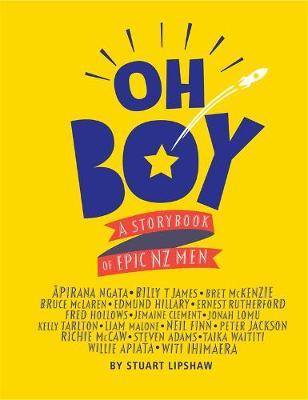

Alan Dingley
Alan is Aotearoa’s Te Awhi Rito Reading Ambassador and is the Library Manager at Freyberg High School in Palmerston North. He has a background in theatre (part of current NZ Theatresports champions ‘SpontaneoUS’) and enjoys using his theatre skills teaching story-building workshops, where he tries to give children, young people, and even adults the confidence to tell their stories, their way. He is a lucky Dad to two gorgeous girls, Sam and Georgie, who lost their Mum Kirsty 6 years ago. Books have played a massive part in their healing process.



